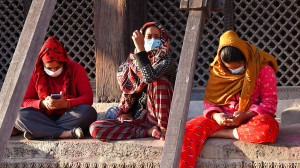Opinion
Lessons in mourning
Last year, one Nepali migrant died abroad every nine hours. When family members receive the dreaded call, they go to Tribhuvan International Airport to collect a lifetime of hope, optimism and dreams reduced to a six-by-four coffin.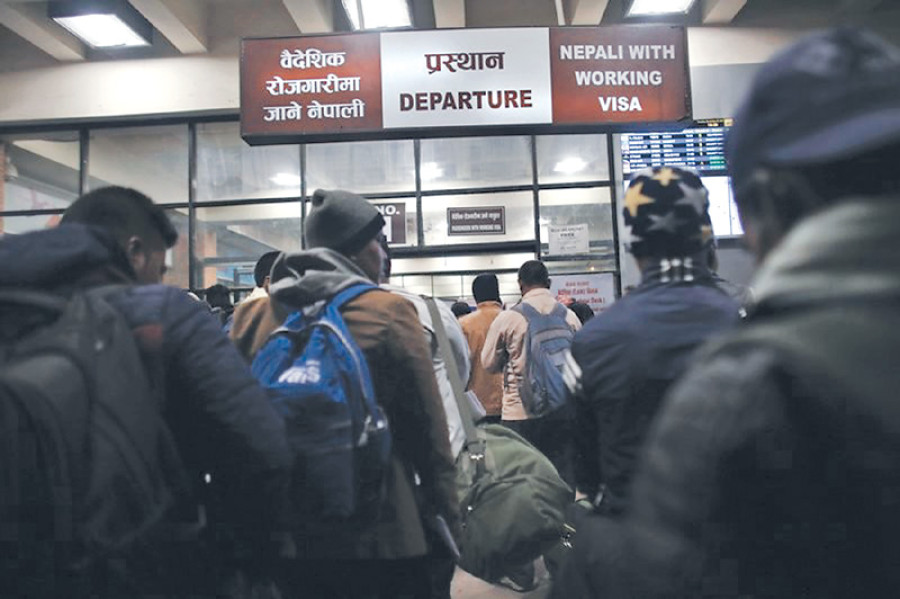
Samik Adhikari & Upasana Khadka
Last year, one Nepali migrant died abroad every nine hours. When family members receive the dreaded call, they go to Tribhuvan International Airport to collect a lifetime of hope, optimism and dreams reduced to a six-by-four coffin. It is needless to say that labour migrants are the be-all and end-all of the Nepali economy. They are not only solving the problem of massive unemployment, but also contributing significantly to our economy. A natural question then arises: Is anything being done to prevent avoidable deaths?
According to a recent International Labour Organisation (ILO) report, the major causes of death among Nepali migrant workers are cardiac arrest (21.8 percent), natural causes (19.6 percent), other unidentified causes (18.4 percent), traffic accidents (13.2 percent), suicide (10.4 percent) and workplace accidents (8.6 percent). These figures are based on the official statistics provided by employers or destination countries, and there is no way to verify them. The ILO report has also pointed out that the data does not include details about the age, employment duration and sector which could potentially help to unravel patterns in these deaths.
Apparent lapses
This severely hampers any kind of policymaking agenda to prevent future deaths while leaving many questions unanswered. What are the natural causes and ‘other unidentified causes’? Why are they not being investigated properly? How many autopsies are performed to actually identify the causes? Is there any incentive for the related authorities to describe the cause of death as unidentified?
Taking a step back, could we trace these deaths back to Nepal and identify issues that might not be evident as factors leading to death, but contribute to them? It is important to remember that for most migrants, Kathmandu is as far as they have travelled spatially before boarding a plane. So what sort of preparation and training do migrant workers get before going to potentially hostile working environments? Speculation about possible reasons for sudden death includes cheap illicit alcohol or massive temperature differentials between indoors and outdoors without allowing the body to adjust. Traffic accidents are another common cause. These are all issues that could potentially be addressed in pre-departure classes.
Pre-departure classes are mandatory, but who provides them and who is monitoring them? Does pre-departure training for a driver differ from that for a construction worker? Are returnees involved in these trainings so they can paint a real picture of the ground realities? Are the trainers qualified? Pre-departure training classes are vital to ensure the safety of migrants, but what is utterly lacking is a culture to take it seriously in Nepal.
Furthermore, are there causes which push migrant workers to refuse to acknowledge their body limits? Most migrants are offered a two-year temporary contract. They pay more than $1,000 to unscrupulous intermediaries, which is usually borrowed informally at absurd interest rates. So when migrants finally reach the destination countries, there is only one thing on their minds, and that is to make as much money as possible in the two years. They cannot afford to arouse their employers’ displeasure because failure to send money home periodically is tied not only to food and supplies for the family, but also to keeping moneylenders at arm’s length and preventing the social stigma of unpaid debts. Attempts to make migration more affordable via initiatives like free visa, free ticket have not worked.
Striving for justice
We know that the government can act decisively when it wants to. For example, it sprang into action when Nepali guards were killed in Afghanistan. The bodies were airlifted immediately, and high officials rushed to the airport to receive them. A temporary ban on departures was put in place, and a taskforce was sent to investigate the situation before it was withdrawn. Is it only during cases of high-profile deaths that the government acts like this? When the coffins were being brought from Afghanistan, there were probably other bodies from Malaysia or the Gulf that had arrived at the same time. But one death does not merit more attention or reaction than another, especially if it could have been avoided. This begs another series of questions: When was the last time the government sent a taskforce to any destination country to examine why people are dying at such an alarming rate? When was the last time a government official met with employers and assessed accident-prone workplaces?
Embassies and labour attachés can be the voice of migrants. Are they equipped to handle such cases? Or have they started to normalise deaths because they happen so frequently? Is there anywhere a migrant can seek support when pushed by overwhelming stress to contemplate suicide? The same level of proactive action that was seen after the Afghanistan case needs to be seen elsewhere where the number of migrants is high, and deaths are not happening in the tens but in the thousands. There is Rs3.5 billion sitting idly in the Migrant Welfare Fund which should be used to make outmigration safer. It is not lack of know-how, yet the narrative simply does not seem to move forward.
We cannot afford to be selectively proactive because all deaths matter equally, and if these are deaths that can be avoided, inaction cannot be an option. There will undoubtedly be another story in the near future about more coffins. But it is high time the approach towards covering these stories became more investigative and solution-driven. To those who write, our reaction should be more than just sensationalising these stories. We need to ask hard questions, dig deeper and seek actionable steps. To those who read, our reaction should change beyond grief and anger into action, at least to pressure the related authorities to do something about them. Especially if many of these deaths are potentially avoidable, it is particularly important to question, reason, push for evidence, push for action and take lessons as we mourn. Only then will we be doing justice to these stories.
Khadka and Adhikari work at the World Bank, Washington DC and are graduates of the MPA/ID program at Harvard; views expressed here are personal.




 16.12°C Kathmandu
16.12°C Kathmandu
.jpg&w=200&height=120)
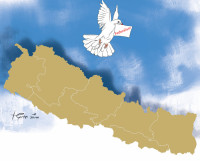

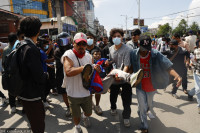
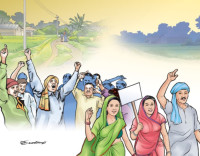


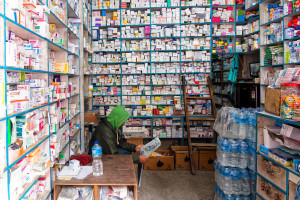
%20(1).jpg&w=300&height=200)

